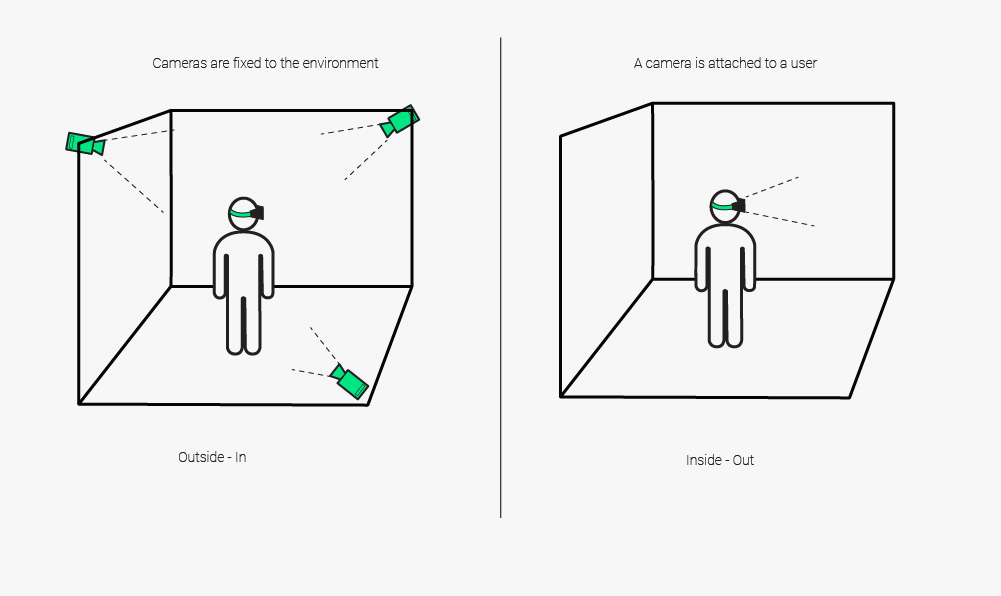Inside-out and outside-in tracking refer to the two different approaches to monitoring the user’s movements outside of VR to mirror them inside of the VR environment.
Outside-in tracking focuses on placing cameras, sensors, and other tracking devices around the user to cover whatever area is used to simulate the virtual box the user will interact with. These devices trace the locations of any moving objects in the scene and translate them into virtual movements. While this process has both high accuracy and low latency, it suffers from a hard limit to its range since the sensors don’t move, as well as an inability to record anything outside of the line of sight of the sensors.
Meanwhile, inside-out tracking uses the sensors placed inside of the VR headgear exclusively. The headset’s position is marked and continuously readjusted to keep track of the current position of the user in the VR environment, and the camera(s) on the headset try to discern pre-placed markers out of the user’s real surroundings, which serve as reference points for the user’s movements. However, inside-out tracking can function without the use of markers, as well; markerless inside-out tracking uses positional tracking of objects and observes natural features of the camera’s surroundings to align the user with respect to these features. While this method is both cheaper and far more flexible than either of those above, it lacks accuracy, can have a much higher latency than other methods of tracking, and requires that all processing is done solely by the headset.
